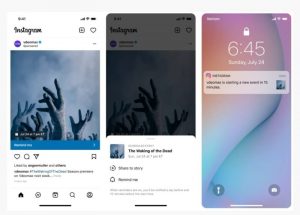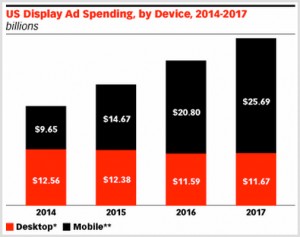Contributor Liad Agmon discusses the challenges of the mobile web and why retailers need to embrace a mobile-first mentality that caters to consumers’ preferences.

Mobile devices and smartphones have completely changed the way we think, connect and work. Nowhere is this transformation more apparent than in the way we shop.
While the rise of e-commerce itself has forced retailers to conduct their business in fundamentally different ways, the explosive increase in ownership and usage of mobile devices presents entirely new challenges and opportunities for e-commerce-focused businesses.
In Q2 2016 alone, smartphones accounted for nearly half of all traffic to e-commerce sites. Conversion rates on mobile increased by 29 percent in 2015.
It’s not as if mobile is replacing any of the popular mediums of commerce. Rather, consumers are incorporating mobile devices into their shopping ecosystem.
While the revenue opportunities for e-commerce businesses are huge, potential customers continually feel frustrated by lackluster mobile web experiences. Even though many consumers use mobile devices due to convenience and access, many of them don’t enjoy making mobile purchases, much less the overall experience.
The challenges of the mobile web
In a survey of more than 1,000 e-commerce shoppers, just 12 percent of respondents said they actually enjoyed the mobile shopping process, with over 63 percent of respondents at neutral or worse.
What’s more, 51 percent of smartphone users have purchased from a company or brand other than the one they intended to, simply because they received a more relevant experience there.
It goes without saying that mobile shopping cart abandonment rates are horrendous, at 97 percent.

Even if some customers love a brand or company, they’ll leave or go to a competitor if the mobile experience isn’t optimized. Research from Google shows that only nine percent of users will stay on a mobile site if it doesn’t satisfy their needs; 30 percent of mobile shoppers abandon an active transaction if it’s not optimized for mobile.
These sub-optimal mobile web experiences translate into business losses. As Ian Blair of BuildFire writes on Forbes, the opportunity costs of choosing not to prioritize the mobile customer experience will only compound as mobile traffic and engagement increase toward the end of the decade.
There’s a competitive nature to bad mobile experiences, too. One-third of smartphone users have “purchased from a company or brand other than the one they intended to because of information provided in the moment they needed it,” according to Google.
Most of these sub-optimal experiences stem from the inherent challenges with mobile. Limited screen real estate makes navigation and product discovery harder for end-users, leading to frustrated or confused shoppers.
In an eMarketer survey, 27 percent of respondents said it’s difficult to compare products and retailers via a smartphone. Our internal research at Dynamic Yield found that on mobile, users at the top of the funnel would abandon at a 10 percent higher rate than on desktop.

Fortunately, there are some ways marketers can overcome the mobile web challenge and adapt to the new mobile-first world of consumer preference — by using the technologies available to improve the user experience and aggressively combat cart abandonment.
Guide visitors to the right products
A large part of mobile web traffic comes from users who are actively browsing a company’s suite of products. But for many mobile sites, showcasing relevant products to the right kind of customer is a challenge, often because it’s not immediately obvious which categories you offer.
To be sure, most of these navigational and product discovery pitfalls start with the home page.
In a large-scale usability test of the top 50 mobile e-commerce sites, the Baymard Institute found that “42% percent of mobile e-commerce sites have a home page design that doesn’t allow users to accurately deduce the type of site they’ve landed on,” leading to immediate site abandonment from the home page itself.
In the usability test, 70 percent of users would swipe down the page “to get an overview” of what options were available to them. On sub-optimized sites, this initial scan led users to draw “misconceptions” about the breadth of the site’s product catalog, even on highly recognizable brands like Best Buy or Macy’s.
One way to maximize screen space and guide visitors to discover relevant products is to display a scrollable sub-category carousel, personalized according to the visitor’s past behavior, purchase history and product preferences.

Creating instant access to personally preferred items will entice visitors to engage further with the product categories they are most likely to buy from. If you don’t have enough data on the customer at hand, another option is to float a Tinder-like discovery questionnaire that enables visitors to easily add new or top-selling items to the cart.

Prevent mobile shopping cart abandonment
In an increasingly mobile world, cart abandonment poses an even greater challenge.
Sub-optimal mobile experiences are directly responsible for high abandonment rates. What’s even more shocking is that most mobile sites don’t have a cart abandonment strategy in place and have no way to nudge visitors to complete their purchases.
One bona fide method of reducing cart abandonment is to offer a discount at checkout as an incentive to complete the order now. A great way to do this is by serving the message as a peel notification at the bottom of the product page.

If the visitor is experiencing technical difficulties with the purchase (which is common), you can provide a drop-down notification with a direct link to call customer support.
Overall, mobile experience enhancement has serious business consequences, and companies that have optimized their mobile web experience are growing faster than those that have not. As more and more people are using their smartphones and devices to shop, mobile commerce must become a top priority for any e-commerce business.
Some opinions expressed in this article may be those of a guest author and not necessarily Marketing Land. Staff authors are listed here.
Marketing Land – Internet Marketing News, Strategies & Tips
(41)










